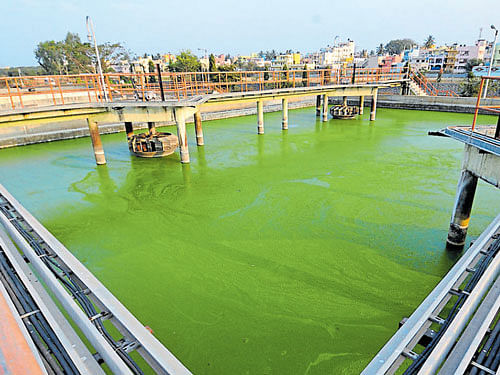
Decentralised approach to treating sewage, rejuvenating lakes and harvesting rainwater have the potential to generate a whopping 31 thousand million cubic (tmc) feet of water every year, which is much more than what the city needs, finds a latest study by researchers from the Indian Institute of Science (IISc), Bengaluru.
The study was conducted by a team of scientists including senior researcher Ramachandra T V, Energy and Wetlands Research Group, Centre for Ecological Sciences, IISc, to assess the quantum of water available in the region to meet the domestic demand.
The study largely banks on three key potentials: annual rainfall, sewage treatment and efficient rainwater harvesting system.
“There is 30.85 tmcft of water available in the region annually to cater to the demand of Bengalureans, which is 20.05 tmcft. However, the city administration should opt for decentralised optimal water management,” Prof Ramachandra notes.
“Bengaluru records an average annual rainfall of 787 mm and the total annual water yield is about 14.8 tmcft. The domestic demand of water is 20.05 tmcft per year (1,573 million litres per day - MLD). This means about 73% of Bengaluru’s water demand can be met by efficient harvesting of rainwater,” the study points out.
The quantification of sewage generated shows that about 16.04 tmcft (1,258 MLD) of sewage is generated in the city.
The research paper notes that the sewage treatment with complete removal of nutrients and chemical contaminants can be achieved by constructing decentralised treatment plants.
It gives an example of a success model (secondary treatment plant integrated with constructed wetlands and algal pond at Jakkur lake).
The study, however, observes that this model of decentralised harvesting of water and use of treated sewage is not an attractive proposition for the current breed of decision-makers with a colonial style of functioning.
The financial gain is much higher in the case of mega projects (such as water diversion) compared to these decentralised models. This is the sole reason for the local administrators to degrade decentralised water harvesting structures and alienate the local community, the research paper says.
The potential
*Annual rainfall: 787 mm
*Rainwater yield: 14.80 tmc/year
*Sewage generated: 1,259 MLD - 16.04 tmc/year
*Domestic demand: 1,573 MLD - 20.05 tmc/year